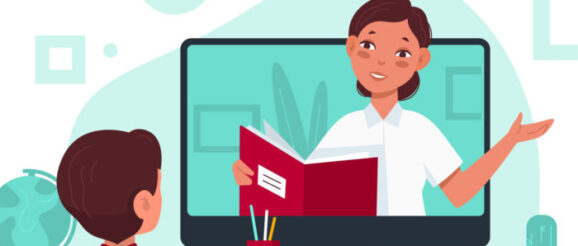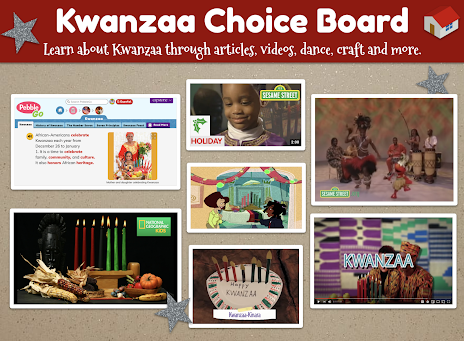Librarians leading the way with innovation, support during COVID

 Olga Kurbatova/Getty Images
Olga Kurbatova/Getty Images Shannon McClintock Miller, District Teacher Librarian and Director of Innovation at Van Meter School
“Time to shine.”
Those words have been part of titles in Shannon McClintock Miller’s speeches and they certainly echo the magnitude of this moment for librarians across the country.
Whether providing resources to students, backing teachers or pushing the bounds of innovation, this cadre of essential but often underappreciated stars has been called on to deliver increasing levels of support in K-12 schools during the COVID-19 pandemic.
With a mission to serve children first, librarians have helped develop plans and brought in engaging new tools for learning that have been invaluable assets during remote learning. When a tired teacher has needed a break, they’ve been there in relief roles – as Miller has done with augmented reality lessons and bringing robots into classrooms.
Teacher librarians have become, well, far more than librarians. They’re now essential assets to any district operation.
“One of the biggest changes is the collaboration that we’re doing with the teachers and how librarians are leaders more than ever,” says Miller, District Teacher Librarian and Director of Innovation at Van Meter School in Iowa. “That collaboration has probably quadrupled, and I hear that from librarians around the country. We’re the ones that manage and curate all the resources. We’re the ones that develop the libraries and learning online. We are the ones who bring new technology and innovative ideas to our teachers and students.
“And we are literacy leaders. I think that is a huge thing for teacher librarians who maybe weren’t seen as leaders before, who needed that extra push and empowerment to be leaders from, and beyond the library. Hopefully, administrators, teachers, families and even kids will see all that librarians are doing and the changes they bring.”
Not that they were undervalued before, but the ways librarians have continually evolved to meet the changing needs of students and their schools has pushed them to the forefront during this time.
“We’re the experts at bringing those resources together,” Miller says. “I’ve always collaborated a lot with the teachers, but it hasn’t been teachers coming and saying, ‘Hey I have this cool new thing to show you.’ Now, the teachers are coming to us saying, ‘Can you help us do this? Can you help us find this resource? Or how do you put together something that the kids are going to create digitally.’ That is exciting to me because it’s the hook that we needed to continue these changes that are happening in education. This is our time to really make a difference.”
Second graders used WikkiStix to create Veterans Day projects (Photos courtesy of Shannon McClintock Miller)
Standing tall
Miller jokes about the evolution of librarians from their sit-in-your-chair posts of 30-something years ago to the now always-mobile, always creative staff that lead learning development in schools. Miller says she spends most of her hours of the school day on her feet, continually shifting from one helpful or innovation task to the next.
“Going into a library and seeing a librarian sitting, I don’t even know what that looks like,” she says.
That’s not surprising given her status as the school’s go-to resource and her quest to impart that knowledge across the education space. She is a social media influencer, speaker, blogger and a main connection point for other librarians. She points out that her Facebook group of Future Ready Librarians is now more than 26,000 strong, providing a way for them to connect and share experiences and best practices across the country. That continual banter and dialogue has helped librarians become a powerful network for the school systems and public libraries they patrol.
Many of them have needed that support, facing incredible challenges in 2020, including their spaces largely becoming off limits to students.
Kindergarten students using Pear Deck
“We were pretty sad that kids weren’t going to come to the library like they usually do,” Miller says of her role along with library associate Diana Hockenberry. “So, I set up this virtual reading time that Diana reads from the library every day, and the kids can tune in from their classrooms or even from home for our virtual learners. Even little things like that, you can see Diana being more empowered, feeling good about what she can do to help the kids.”
Understanding those responsibilities and changing roles, Miller, along with her colleagues from Future Ready Librarians, has developed summits and webinars, including one on how the role of librarians would shift during blended or remote learning.
“We heard from nine librarians who shared amazing stories of how they were dealing with the situation,” Miller says. “It’s just so inspiring, how one little thing can make a difference. We spoke about having virtual events, having office hours for your kids, equity. [The Summits] are there to support librarians even in how they can assert themselves and have conversations with leaders within their schools.”
At Van Meter Schools, librarians have been instrumental in helping students and teachers understand how to use technology and tools. All students in the pre-K to grade 12 school, which houses just under 1,000 young learners, have devices. Even the preschoolers have iPads.
“With all the new learning, technology and innovation being brought into school districts, librarians are definitely one of the keys into making that environment work,” Miller says. “There’s so many things they’re doing – constant collaboration, taking care of the physical collection, making sure you build a virtual library. Having that strong person in place is really getting a lot of districts through.”
Van Meter School’s virtual makerspace
What’s happening in libraries
At the Van Meter School library, there is always some innovative tool, platform or fun experience happening behind the scenes. The library utilizes Follett’s Destiny Discover management system to connect its network of students both in the classroom and at home. Many others do too, with 60% of school districts reporting using it.
“Destiny Discover has never been more important,” Miller says. Kids know they can find books there, using that as a home base to see how they can reserve books, get audio books and ebooks. Within Destiny, we can embed other resources, so our databases and digital tools are there too. And of course, Follett’s Collections by Destiny, have been a huge game changer for how we curate, share and build digital collections and lessons.”
 Van Meter also relies on a slew of other fun apps to keep faculty ahead of the curve and students engaged, including Pear Deck, Buncee for digital creation, Symbaloo, along with Collections by Destiny to organize its tools, Flipgrid for video and voice sharing and Capstone Connect, which gives teachers access to PebbleGo articles, eBooks, and teacher guides, with the ability to create instant access hyperlinks for easy embedding in learning management systems.
Van Meter also relies on a slew of other fun apps to keep faculty ahead of the curve and students engaged, including Pear Deck, Buncee for digital creation, Symbaloo, along with Collections by Destiny to organize its tools, Flipgrid for video and voice sharing and Capstone Connect, which gives teachers access to PebbleGo articles, eBooks, and teacher guides, with the ability to create instant access hyperlinks for easy embedding in learning management systems.
Of course, libraries can also provide access to hands-on or maker-space materials that have even gone online, including Ozobots, Merge Cubes, 3d printers and others. At Van Meter, they’ve been working a lot with choice boards on topics such as coding and Makerspaces, where kids can choose their own learning paths.
“The teachers, kids and families love the choice boards … It has been fun to share them globally with others too.”
Miller, who often shares updates through her blog and posts her events via Twitter and Instagram, says, “Our library website quickly turned into not just our library site, but a remote learning and library site. It continues to be that way. And it might be forever.”
The future of librarians
The role of librarians once the pandemic wanes may only grow. Schools looking to the future likely will not be turning their back on digital … or the many tools that can help students learn.
“There are still things that are core to what we do as librarians – being literacy champions, collaborating with teachers, and serving as that person in the school that kids know that they can come to,” Miller says. “But librarians have a lot of skills, and they have a lot of great knowledge around learning, teaching, technology and innovation.”
For librarians and districts, it is crucial that their voices are heard and that they continually develop skills to put them ahead. The one space Miller recommends they get connected with is the Future Ready Library Community.
“There are so many valuable resources there,” she says. “It’s a great place to start for districts, having them join that network and finding some mentors. They can reach out to me, reach out to some others around the country and get some advice. And most of all, it’s such a special place for friendships and the support we all need.”
Giving them a chance to show off those skills is something school districts would be wise to leverage.
“They’re probably going to be amazing,” Miller says. “They are people who love literacy and reading and just championing student voice. I think that we all have people within our schools who can really shine. To be empowered, I think that’s such a great thing. They can really make a difference in this time and in the future, too.”
